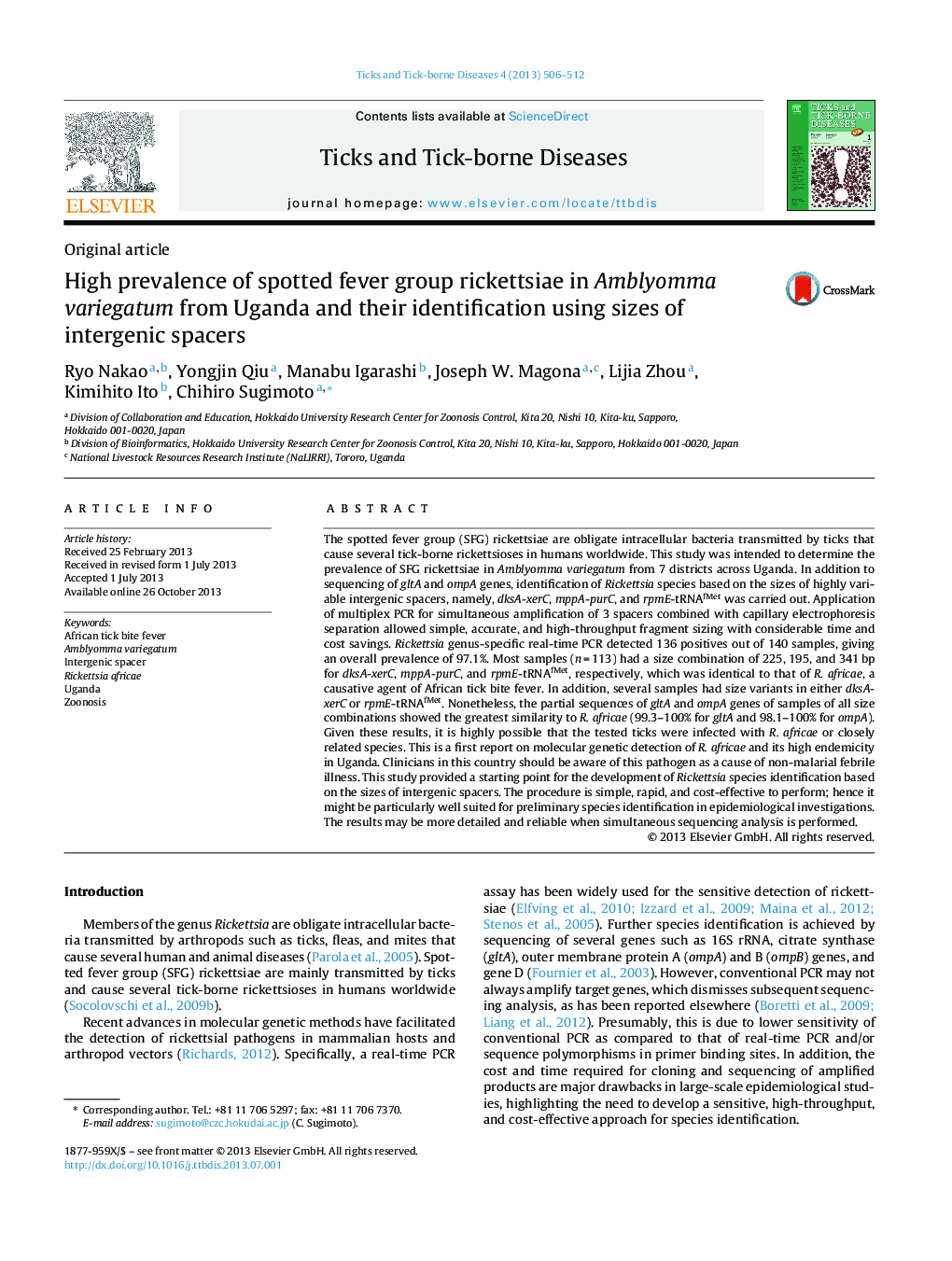| کد مقاله | کد نشریه | سال انتشار | مقاله انگلیسی | نسخه تمام متن |
|---|---|---|---|---|
| 2474142 | 1113117 | 2013 | 7 صفحه PDF | دانلود رایگان |

The spotted fever group (SFG) rickettsiae are obligate intracellular bacteria transmitted by ticks that cause several tick-borne rickettsioses in humans worldwide. This study was intended to determine the prevalence of SFG rickettsiae in Amblyomma variegatum from 7 districts across Uganda. In addition to sequencing of gltA and ompA genes, identification of Rickettsia species based on the sizes of highly variable intergenic spacers, namely, dksA-xerC, mppA-purC, and rpmE-tRNAfMet was carried out. Application of multiplex PCR for simultaneous amplification of 3 spacers combined with capillary electrophoresis separation allowed simple, accurate, and high-throughput fragment sizing with considerable time and cost savings. Rickettsia genus-specific real-time PCR detected 136 positives out of 140 samples, giving an overall prevalence of 97.1%. Most samples (n = 113) had a size combination of 225, 195, and 341 bp for dksA-xerC, mppA-purC, and rpmE-tRNAfMet, respectively, which was identical to that of R. africae, a causative agent of African tick bite fever. In addition, several samples had size variants in either dksA-xerC or rpmE-tRNAfMet. Nonetheless, the partial sequences of gltA and ompA genes of samples of all size combinations showed the greatest similarity to R. africae (99.3–100% for gltA and 98.1–100% for ompA). Given these results, it is highly possible that the tested ticks were infected with R. africae or closely related species. This is a first report on molecular genetic detection of R. africae and its high endemicity in Uganda. Clinicians in this country should be aware of this pathogen as a cause of non-malarial febrile illness. This study provided a starting point for the development of Rickettsia species identification based on the sizes of intergenic spacers. The procedure is simple, rapid, and cost-effective to perform; hence it might be particularly well suited for preliminary species identification in epidemiological investigations. The results may be more detailed and reliable when simultaneous sequencing analysis is performed.
Journal: Ticks and Tick-borne Diseases - Volume 4, Issue 6, December 2013, Pages 506–512